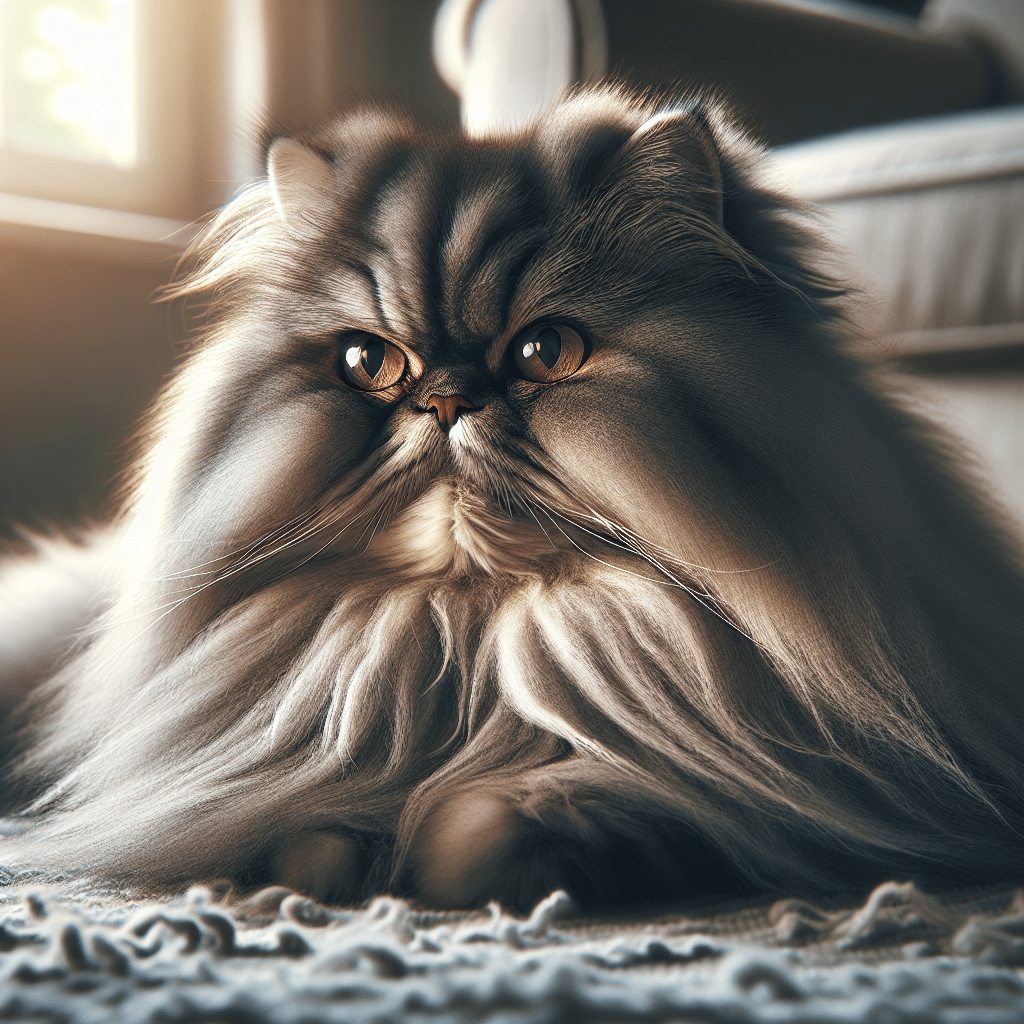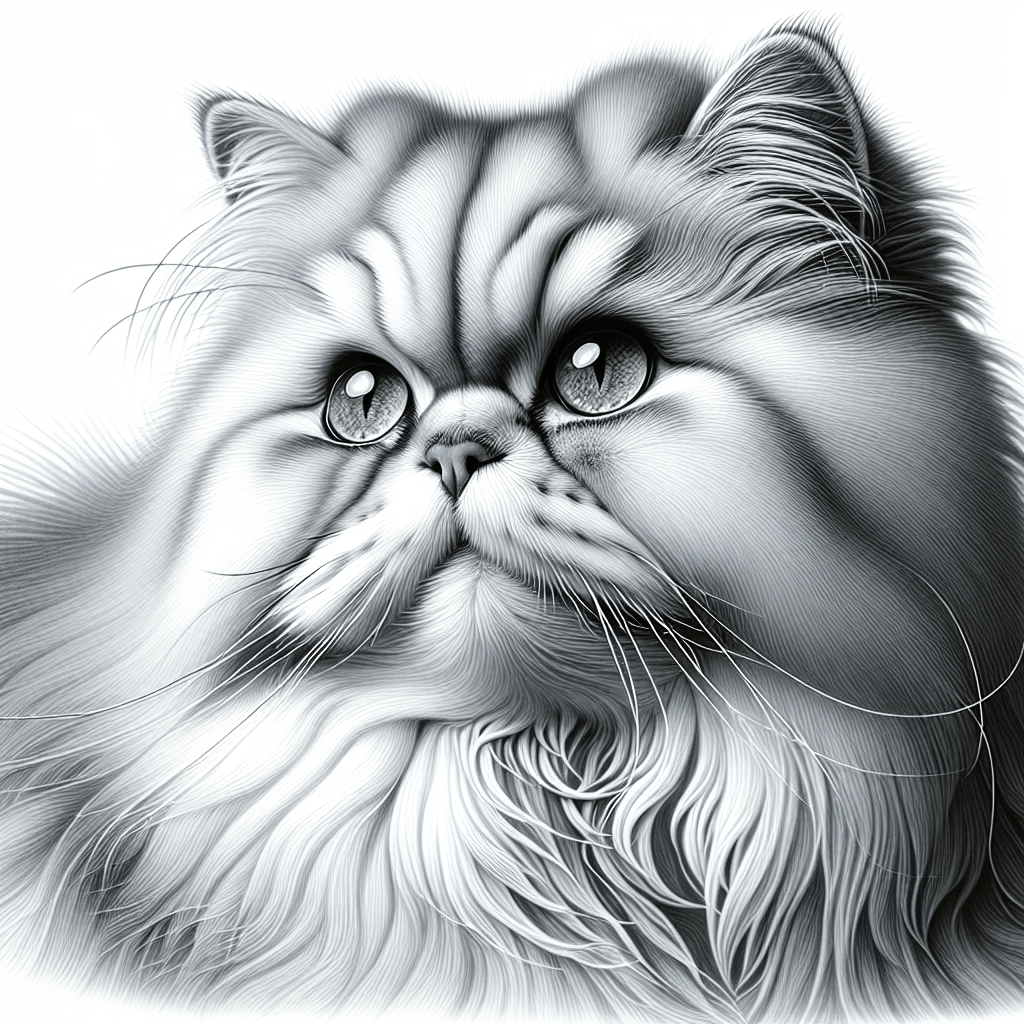In this article, you will discover all the fascinating details about the beautiful and elegant Persian cat breed. Known for their luscious coats and unique facial features, Persian cats are a true delight to have as a furry companion. You will learn about their origins, their distinctive characteristics, and the special care they require to keep them healthy and happy. So, get ready to dive into the enchanting world of Persian cats and unravel the secrets behind their captivating allure.


Origin
Ancient history
The Persian cat is an ancient breed that can trace its roots back to the early days of the Persian Empire. These exquisite cats were favored by royalty and are believed to have originated in the region that is now known as Iran. The exact timeline of their arrival in the Persian Empire is unclear, but it is thought to have been around 1500 B.C. Persian cats quickly gained popularity for their luxurious coats and gentle temperament.
Introduction to Europe and America
It wasn’t until the 17th century that Persian cats made their way to Europe and America. These captivating felines captured the hearts of many with their stunning appearance and enchanting personalities. The first recorded Persian cat in Europe was brought to Italy in the 1600s, and soon after, they began to appear in royal courts across the continent. In the 1800s, Persian cats were introduced to the United States and quickly became a symbol of elegance and refinement.
Physical Characteristics
Facial features
One of the most distinctive features of the Persian cat is its flat face. This unique facial structure, known as brachycephalic, gives the Persian cat its iconic look. Their round, expressive eyes are set wide apart and can come in a variety of colors, including blue, green, copper, and odd-eyed. Persian cats also have small, rounded ears and a sweet, upturned nose that adds to their adorable appearance.
Body structure
Persian cats have a medium to large-sized body with a well-boned structure. They have a broad chest and a short, muscular neck that gracefully supports their elegant head. Persian cats are known for their rounded, full bellies and sturdy legs, which end in small, compact paws. Their overall body shape gives them a regal and dignified presence.
Coat and colors
One of the Persian cat’s most beloved traits is its long, luxurious coat. Their fur is soft and silky, and it flows beautifully over their body. Persian cats can come in a variety of colors and patterns, including solid, tortoiseshell, calico, tabby, and colorpoint. Their coat requires regular grooming to prevent matting and keep it looking its best.
Personality
Calm and gentle
The Persian cat has a reputation for being a calm and gentle companion. They are known for their serene nature and their ability to create a peaceful atmosphere in any home. Persian cats are often described as being regal and dignified, and they carry themselves with a graceful poise. They enjoy a calm and quiet environment and are content to spend their days lounging in a cozy spot, observing their surroundings with a watchful eye.
Reserved and independent
While Persian cats are known for their gentle nature, they can also be quite reserved and independent. They appreciate their personal space and may not always seek out constant attention and affection. Persian cats are happy to spend time alone, enjoying their own company. However, they also form strong bonds with their human companions and can be incredibly loving and loyal.
Grooming
Daily brushing
Due to their long, luxurious coats, Persian cats require daily brushing to keep their fur healthy and mat-free. Regular brushing helps to remove loose hairs and prevents tangles and hairballs. A wide-toothed comb or a brush specifically designed for long-haired cats is ideal for grooming Persian cats. This daily grooming routine not only helps to maintain their coat’s beauty but also provides an opportunity for bonding with your feline friend.
Bathing
While Persian cats are generally clean animals that groom themselves, occasional baths may be necessary to keep their coats looking their best. It is important to use a gentle, cat-specific shampoo and thoroughly rinse out any residue to avoid irritating their sensitive skin. Bathing should be done with caution to prevent stressing out the cat, and proper drying is essential to avoid matting or discomfort.
Ear cleaning
Persian cats are prone to ear infections due to their long, floppy ears that can trap moisture and debris. Regular ear cleaning is necessary to prevent the build-up of wax and dirt. Using a gentle, cat-safe ear cleaner and cotton balls, gently wipe the outer ear surface and avoid inserting anything into the ear canal. It is important to observe any signs of ear discomfort or infection and seek veterinary care if needed.
Eye cleaning
Persian cats have beautiful, expressive eyes, but they are also prone to tear staining and eye discharge. Daily eye cleaning is essential to keep their eyes clear and prevent any irritation or infection. Use a damp, soft cloth or a cotton ball moistened with warm water to gently wipe away any discharge. Be careful not to apply excessive pressure or use any harsh substances that could harm their delicate eye area.


Health
Common health issues
While Persian cats are generally healthy, they are prone to certain health issues. One common problem is their brachycephalic facial structure, which can lead to respiratory difficulties and eye drainage. They may also experience dental issues, such as overcrowding or misalignment. Additionally, Persian cats are susceptible to polycystic kidney disease, a genetic condition that can cause kidney dysfunction. Regular veterinary check-ups and being aware of these potential issues are important for maintaining the overall health of your Persian cat.
Special care needs
Due to their long, flowing coats, Persian cats require regular grooming to prevent matting and keep their fur in optimal condition. Their eyes and ears also require attentive care to avoid infection or discomfort. It is crucial to provide a calm and stress-free environment for Persian cats, as they can be sensitive to changes in their surroundings. Additionally, their brachycephalic facial structure necessitates careful monitoring of their breathing and daily cleaning to prevent any potential breathing difficulties.
Nutrition
Appropriate diet
Feeding your Persian cat a balanced and appropriate diet is essential for their overall health and well-being. A high-quality, commercial cat food that is specifically formulated for long-haired cats is recommended. It should provide essential nutrients, including proteins, fats, vitamins, and minerals. Persian cats may have a preference for moist or wet food due to their short muzzle, which can make it difficult for them to chew dry kibble.
Feeding schedule
Establishing a consistent feeding schedule is important for Persian cats. Dividing their daily food intake into several small meals throughout the day helps prevent overeating and keeps their digestive system running smoothly. Fresh, clean water should always be available for them to drink. Monitoring their weight and adjusting their portions accordingly is crucial to prevent obesity, as Persian cats can be prone to weight gain.
Training and Exercise
Obedience training
Persian cats are intelligent and can be trained using positive reinforcement techniques. While they may not be as eager to please as certain dog breeds, they can still learn basic commands and behaviors. Regular training sessions with rewards such as treats or praise can help to stimulate their minds and maintain a bond with their human companions. Keep training sessions short and enjoyable to prevent boredom or frustration.
Play and exercise requirements
Although Persian cats are not known for being overly active, they still require regular play and exercise to keep them physically and mentally stimulated. Interactive toys, puzzle toys, and feather wands can provide opportunities for them to engage in play and satisfy their hunting instincts. Daily play sessions can also help prevent weight gain and promote a healthy lifestyle for your Persian cat.
Living Arrangements
Indoor vs. outdoor living
Persian cats are best suited for indoor living, as they are not well-adapted to the outdoors. Their long coats are prone to getting tangled in vegetation or collecting dirt. Additionally, their calm and gentle nature may make them vulnerable to potential dangers, such as traffic or aggressive animals. Creating an enriching indoor environment with plenty of toys, scratching posts, and cozy hiding spots ensures their safety and well-being.
Space requirements
Persian cats may have a more laid-back approach to exercise, but they still appreciate having ample space to move around and explore. Providing them with a spacious living area allows them to exercise and stretch their muscles comfortably. Persian cats also enjoy vertical spaces, such as cat trees or perches, where they can observe their surroundings from a higher vantage point.
Compatibility with Other Pets
Cat companions
Persian cats generally have a calm and peaceful demeanor, making them compatible with other feline companions. Slow introductions and supervised interactions are essential when introducing a new cat to an existing Persian cat to ensure a harmonious relationship. Providing separate resources, such as litter boxes and feeding stations, can help prevent competition or aggression between cats.
Interaction with dogs
Persian cats can also coexist with well-behaved dogs. Slow and supervised introductions are crucial to allow the cat and dog to become accustomed to each other’s presence. Positive reinforcement training techniques can be used to teach the dog appropriate behavior around the cat. With time and proper introductions, many Persian cats and dogs can develop a bond and become great companions.
Choosing a Persian Cat
Breeder selection
When choosing a Persian cat, finding a reputable breeder is crucial. Look for breeders who prioritize the health and well-being of their cats and demonstrate responsible breeding practices. A reputable breeder will provide you with information about the cat’s lineage, health history, and any genetic testing that has been done. They should also allow you to visit their facilities and meet the kitten’s parents.
Kitten evaluation
When evaluating a Persian kitten, look for signs of good health and a well-socialized temperament. The kitten should have bright, clear eyes, a clean coat, and be alert and playful. Take note of how the kitten interacts with you and its littermates, as this can give you insight into their personality. A healthy and well-adjusted kitten will be curious, friendly, and comfortable with human contact.
Adoption considerations
While purchasing a Persian cat from a reputable breeder is a popular option, adopting a Persian cat from a shelter or rescue organization is also a worthy consideration. Many Persian cats end up in shelters and rescues due to various reasons, and providing them with a loving forever home can be incredibly rewarding. Adoption allows you to give a second chance to a cat in need and experience the joys of becoming a Persian cat parent.
In conclusion, the Persian cat is a captivating and majestic breed with a rich history and distinctive physical characteristics. Their calm and gentle nature, combined with their stunning appearance, makes them a beloved companion for many cat lovers. Proper grooming, nutrition, and care are essential to keep them healthy and happy throughout their lives. Whether you choose to purchase from a reputable breeder or adopt from a rescue, welcoming a Persian cat into your home is sure to bring joy and companionship.

